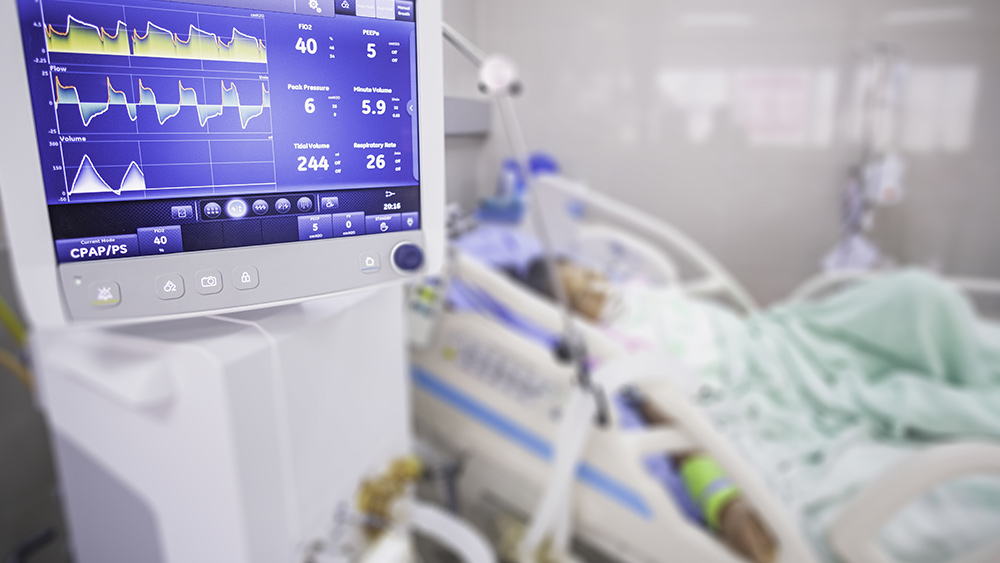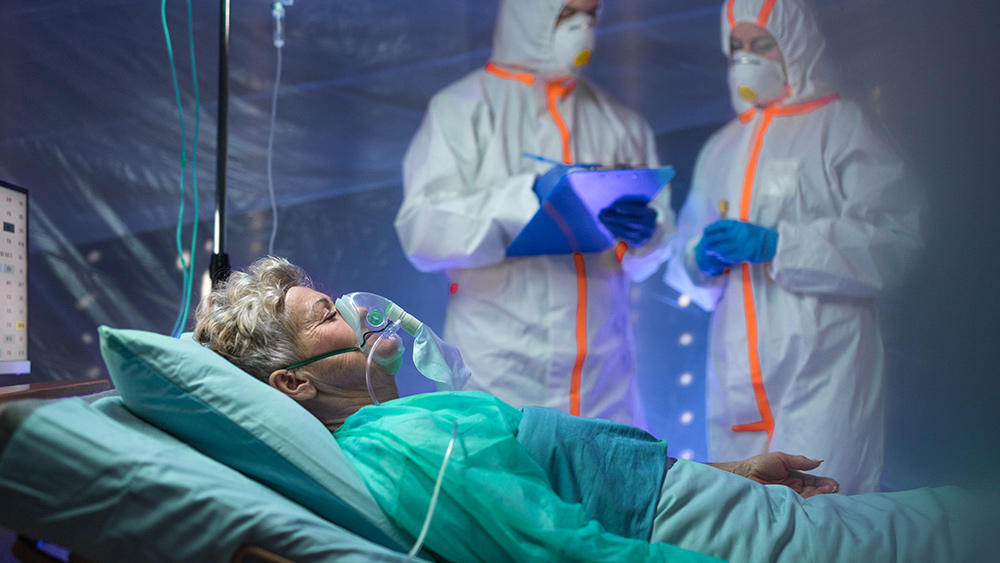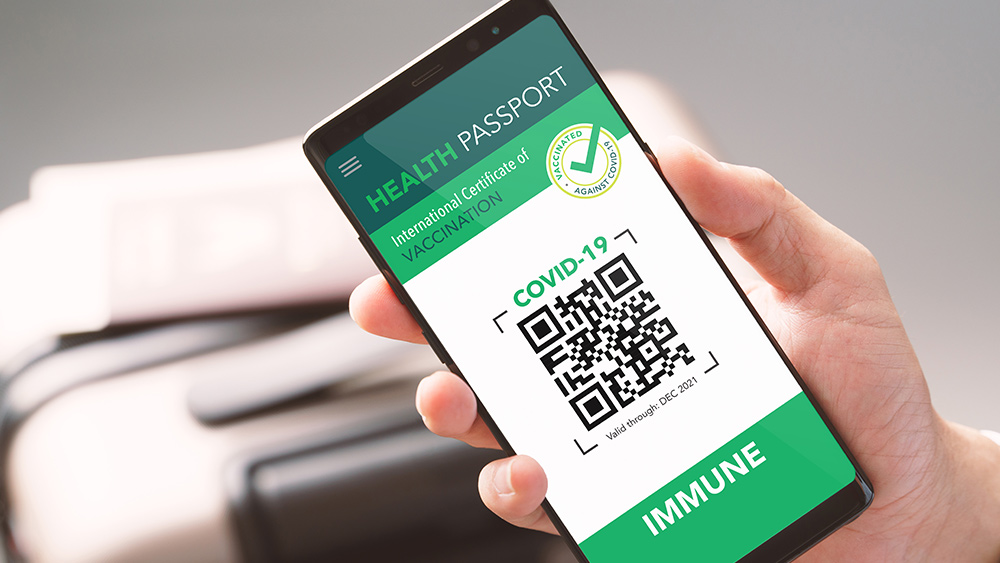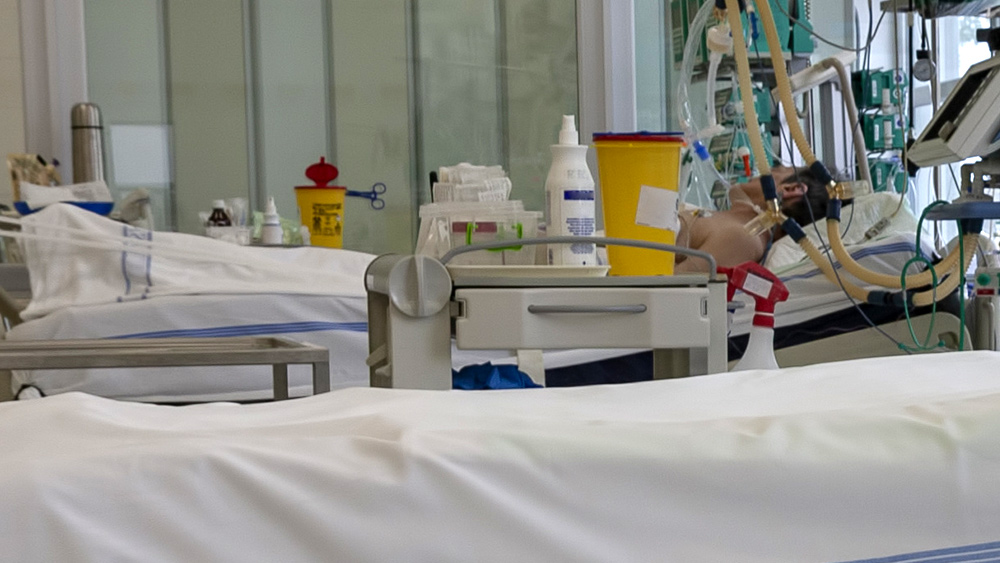Incidental COVID cases make up a large fraction of hospitalizations, according to data
01/31/2022 / By Mary Villareal

Deaths caused by the Wuhan coronavirus are possibly overblown, especially compared to data in other countries. Today, there is a large fraction of hospital patients that are better seen as “incidental” COVID cases, meaning they come into hospitals for a host of ordinary reasons and are tested for the virus. Even though they may be asymptomatic, they test positive and hospitals are greatly burdened to treat them.
With the omicron variant being the dominant form today, the vast majority of people do not even have serious health problems when they are tested.
Critics suggest that hospital data cannot be trusted for the number of COVID cases or deaths. Some reporters have claimed that the picture is pessimistic because hospitalization numbers include people who are simply hospitalized with COVID rather than for COVID. Incidental patients who just happen to test positive while being treated for something else can inflate numbers and are the main reason why ICUs are jammed up.
In some places, the proportion of these types of cases seems high. The University of California San Francisco Medical Center said recently that a third of its COVID patients are “admitted for other reasons.” In New York State, COVID was not included as one of the reasons for admission for nearly 43 percent of the hospitalized people who tested positive. Some physicians in other hospitals say that these numbers can be as high as 70 percent.
Other countries also produced data noting the same phenomenon of “incidental” COVID cases, with the U.K. National Health Service saying 33 percent of the 8,321 COVID-positive cases in England were admitted for different reasons back in December.
The number of COVID patients on ventilators also dropped to a six-month low as the pressure of omicron peaked, according to official figures. So far, a total of 524 people in the hospital were receiving breathing support, marking the lowest daily toll for COVID since mid-July, and seven times lower than the height of the pandemic this time a year ago. This means that with 14,500 patients in hospitals with COVID in England, only 3.7 percent are ill enough to need mechanical ventilation, the smallest percentage since the beginning of the pandemic. (Related: COVID vaccine injury reports among 12- to 17-year-olds more than triple in 1 week, VAERS data show.)
“Not the same disease”
With omicron now becoming the prevalent strain, there are far more people likely to test positive upon entering the hospital compared to the previous waves. Thus, it is important to treat the current hospital data with caution, as “this is not the same disease we were seeing a year ago,” according to regius professor of medicine at the University of Oxford, Sir John Bell.
“The horrific scenes that we saw a year ago – intensive care units being full, lots of people dying prematurely – that is now history in my view and I think…that’s likely to continue,” he said.
Chris Hopson, the chief executive of NHS Providers, which represent hospitals, said that it is also important not to overinterpret the rising hospitalizations, as incidental cases make up around 25 to 30 percent of the cases, although this does vary from place to place.
Further, doctors are saying that they are seeing far more incidental COVID cases now compared to the previous waves.
Dr. Raghib Ali, a consultant in acute medicine at Oxford University Hospitals said that there is a smaller proportion of people ending up with pneumonia from COVID in intensive care. “Probably half the cases I’ve seen are incidentals. You’ve got completely incidental cases, someone coming in with a broken leg, who also tests positive for Covid, then a third category of older people who have comorbidities,” he said.
However, experts warn that the extra admissions are still putting pressure on health services, and nurses still struggle with isolating patients in the wards. Dr. Tim Cooksley, president of the Society for Acute Medicine, said that overcrowding in acute care settings can result in worse patient outcomes.
These problems, he said, are heightened during viral pandemics, as cross-infection can occur. The overstretched acute care services also show that elective beds are being used for emergency patients, and this exacerbates the problem as long waiting lists impact those waiting for urgent investigations and surgical procedures.
Other related stories:
Majority of hospitalized COVID patients are fully vaccinated, report reveals
Canadian doctors: Government data clearly show spike in COVID cases after vaccinations
RIGGED: CDC stops counting vaccine deaths to blame all covid cases on the unvaccinated
Israel’s mass vaccination nightmare worsens as nation reaches a six-month HIGH in new covid cases
Watch the video below to learn more about incidental COVID cases.
This video is from the JournalTV channel on Brighteon.com.
Follow Pandemic.news for more updates.
Sources include:
Submit a correction >>
Tagged Under:
covid data, COVID hospitalizations, covid-19, deception, disinfo, ICU, ICU cases, incidental covid, infections, omicron variant, outbreak, pandemic, truth, Wuhan coronavirus
This article may contain statements that reflect the opinion of the author
RECENT NEWS & ARTICLES
COPYRIGHT © 2017 HEALTH COVERAGE NEWS



















